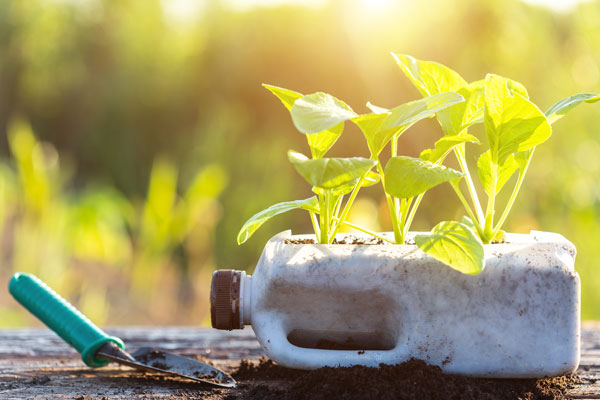Container Vegetable Gardening Tips
- 10
- Jul

A small container vegetable garden can be surprisingly productive, especially if your growing space is limited to a patio or small section of a yard you can’t dig up. You can grow more than just a few herbs on the windowsill once you get the hang of the process. You do need to know about how container gardening and bed gardening differ, but you’ll find that restrictions are few and far between.
Best Practices for Your Container Garden
Container gardens differ from in-ground gardens in that you need to ensure adequate space and drainage in each container, and the combined weight of the fully grown vegetables, soil and containers can’t exceed weight limits for balconies and decks.
That includes the weight of the humans working on the garden. Soil is heavy. The container garden itself will likely not exceed weight limits, but once you add in the weight of a few people on the balcony, the total weight can easily exceed safe limits, creating a structural and safety risk.
If the plant in a container becomes diseased, toss the plant and soil. Wash the container thoroughly, disinfecting it if needed. Other than buying new soil and fertilizer, you won’t have to avoid planting a new vegetable in the same spot, like you might in an in-ground garden.
Vegetables to Start Gardening With
Vining plants such as tomatoes, beans and peas are very easy to grow and do wonderfully in containers. Monitor them for pests as you would in an in-ground garden, and ensure you leave enough space between the containers for proper airflow. Keep in mind that these vines can get leafy and require breathing room.
Other vining plants like cucumbers, smaller melons and smaller squashes like zucchini are suitable choices, too. Just give the plants space so their leaves don’t interfere with adjacent plants.
Smaller Bushy or Shallow Types
Vegetables that grow on smaller bushes or that are very shallow-rooted work in containers. Peppers are a classic example; both edible and ornamental chile peppers do not take up much space while providing color in the garden. Radishes offer tasty roots and leaves in a small package. Lettuces and other greens can require more attention in terms of pest control, but they fit nicely in small containers. Dandelion greens grow well but require deadheading flowers before they form those puffy seed heads. Garlic and onions are compact and relatively straightforward to grow in smaller spaces.
Root Vegetables
You can grow root vegetables in containers, but the length of the grown vegetable and the weight of the plant require careful planning. Carrots need taller containers for full growth. Potatoes and sweet potatoes can become heavy, especially if you repeatedly mound the dirt to enable more layers of potatoes to form.
Start with a few cherry tomatoes and snap peas, and work your way up from there. You’ll find container gardening to be a fulfilling project.
